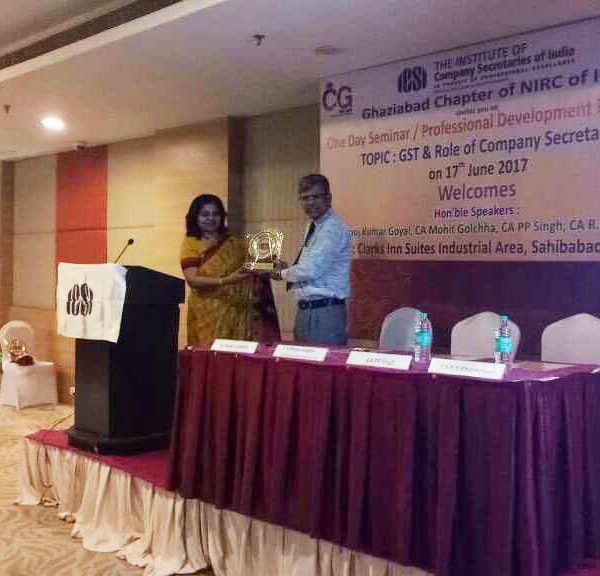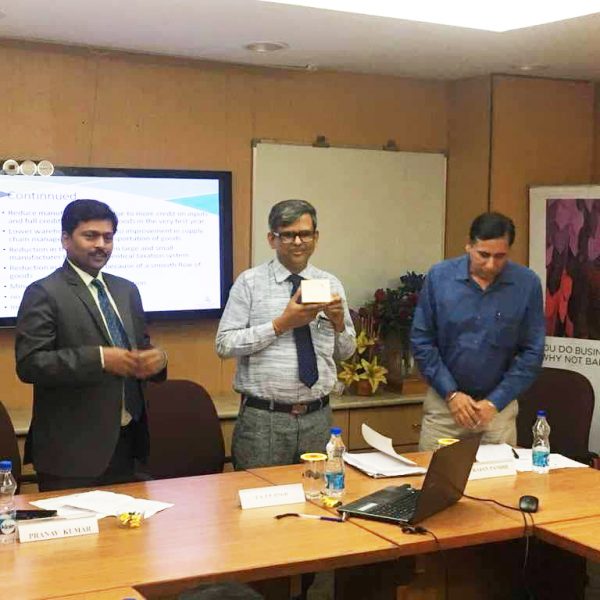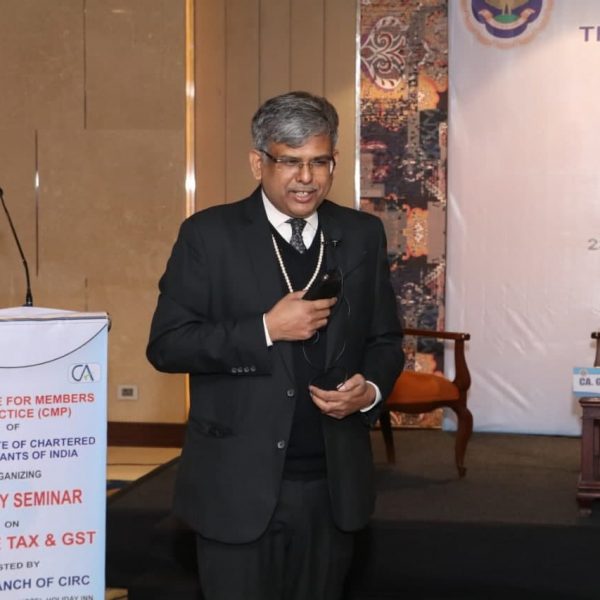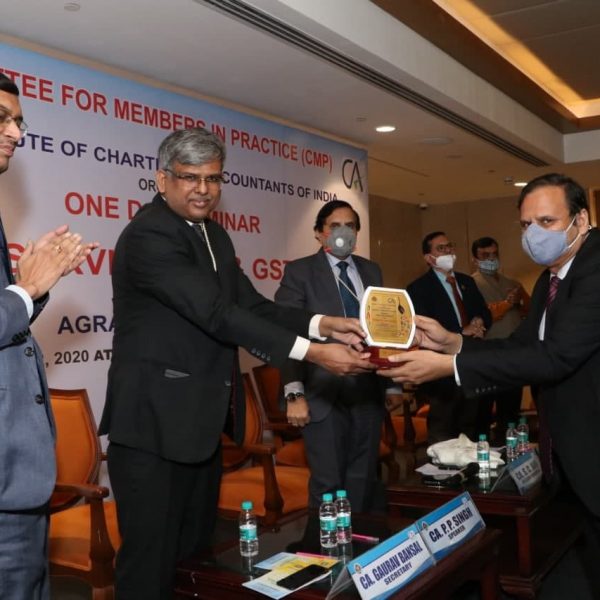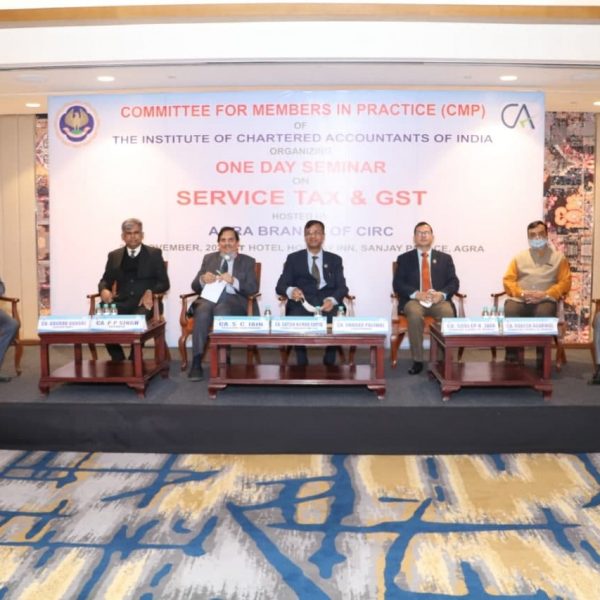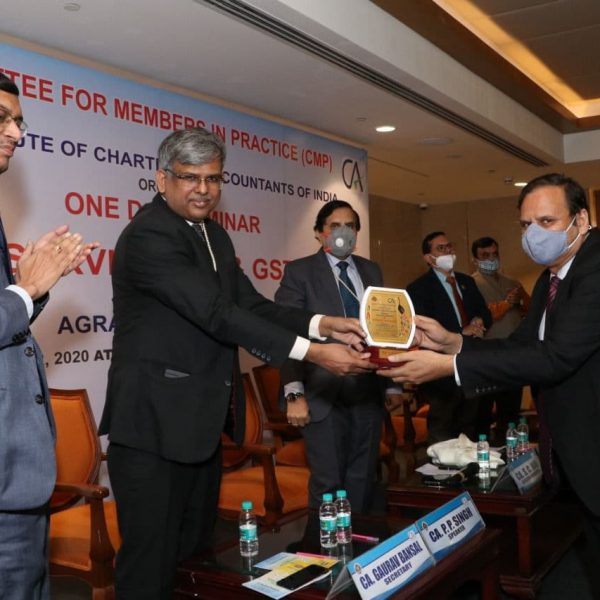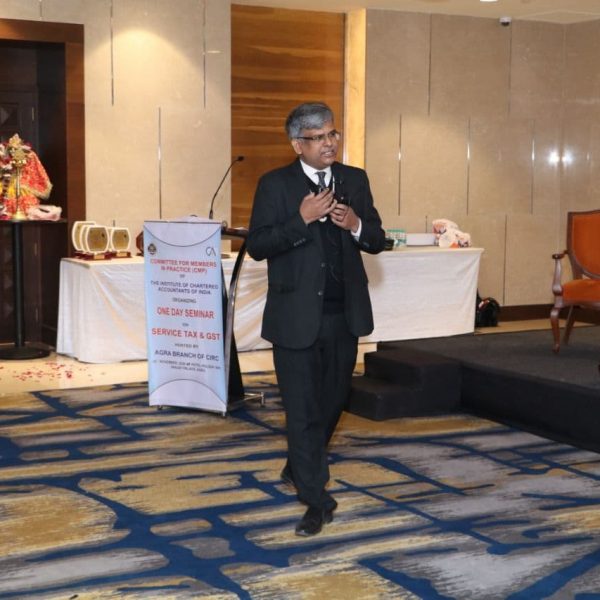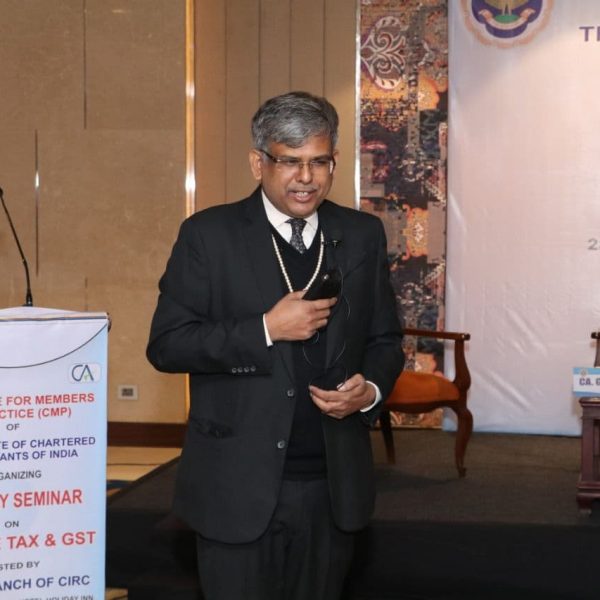Important changes in schedule -III of the companies act effective from FY 2021-22
Introduction: Effort has been made to summarise all the important changes in schedule III of the Companies Act effective from the first of April 2021 in the financial statement including the balance sheet and statement of profit and loss of the company covered in division 1 of schedule III.
Para 4(i) : Mandatory Rounding off of figure in Financial statements for the F.Y ending 31.03.2022 as follows-
| Rounding off | |
| Total Income Less than 100 crore rupees | To the nearest 100,1000,100000 or 1000000 or decimals thereof |
| 100 crore rupees or more | To the nearest 100000,1000000,10000000 or decimals thereof |
Changes in the head of reporting in the balance sheet
Changes in non-current assets- PPE
| old | New | |
| Changes in headings | Property plant and equipment | Property plant and equipment and intangible assets |
| Tangible assets | Property plant and equipment | |
| Intangible assets | Intangible assets |
Changes in reporting of Property plant equipment para 6- I(iii):
| Old | new |
| A reconciliation of the gross and net carrying amounts of each class of assets at the beginning and end of the reporting period showing additions, disposals, acquisitions through business combinations, and other adjustments and the related depreciation and impairment losses/reversals shall be disclosed separately.] | A reconciliation of the gross and net carrying amounts of each class of assets at the beginning and end of the reporting period showing additions, disposals, acquisitions through business combinations, amount of change due to revaluation (if change is 10% or more in the aggregate of the net carrying value of each class of Property, Plant, and Equipment) and other adjustments and the related depreciation and impairment losses/reversals shall be disclosed separately.] |
Changes in reporting of intangible assets para 6- J(ii):
| Old | new |
| A reconciliation of the gross and net carrying amounts of each class of assets at the beginning and end of the reporting period showing additions, disposals, acquisitions through business combinations, and other adjustments and the related depreciation and impairment losses or reversals shall be disclosed separately. ] | A reconciliation of the gross and net carrying amounts of each class of assets at the beginning and end of the reporting period showing additions, disposals, acquisitions through business combinations, and amount of change due to revaluation (if change is 10% or more in the aggregate of the net carrying value of each class of intangible assets) and other adjustments and the related depreciation and impairment losses or reversals shall be disclosed separately. |
CHANGES IN LONG TERM LOAN AND ADVANCES- Para 6L(ia):
| old | new |
| (i) Long-term loans and advances shall be classified as :
(a)Capital Advances; (b) security deposits © Loans and advances to related parties (giving details thereof); (d) Other loans and advances (specify nature). (ii)………………………. |
(i) Long-term loans and advances shall be classified as :
(a)Capital Advances; (b)24 [***] © Loans and advances to related parties (giving details thereof); (d) Other loans and advances (specify nature). (ii)………………………. |
- deleted and inserted in other non-current assets.
Changes in other non-current assets- para 6M(ia)
| Old | new |
| (i) Long-term Trade Receivables (including trade receivables on deferred credit terms);
(ii) Others (specify nature); (iii) Long-term Trade Receivables, shall be sub-classified as : (a) (A) Secured, considered good; (B) Unsecured considered good; (C) Doubtful. ……………………………… |
(i) Long-term Trade Receivables (including trade receivables on deferred credit terms);
(ia) Security Deposits* (ii) Others (specify nature); (iii) Long-term Trade Receivables, shall be sub-classified as : (b) (A) Secured, considered good; (B) Unsecured considered good; (C) Doubtful. ……………………………… |
(* Inserted )
Changes in other non-current assets- para 6M(iv)
| (iv) | For trade receivables outstanding, the following ageing schedule shall be given:
Trade Receivables ageing schedule- outstanding for below period wise from the due date of payment:
Note: Where the due date of payment is not specified, disclosure shall be from the transaction date. Unbilled dues shall be disclosed separately. |
Changes in reporting of trade receivable under current assets-para 6P(i)
Earlier reporting of the aggregate amount of trade receivables outstanding for a period exceeding 6 months from the date they are due for payment to be separately stated.
New Disclosure:
| (i) | For trade receivables outstanding, the following ageing schedule shall be given:
Trade Receivables ageing schedule- outstanding for below period wise from due date of payment:
Note 1. Where the due date of payment is not specified, disclosure shall be from the transaction date. Note: 2. Unbilled dues shall be disclosed separately. |
Misuse of borrowings from banks and financial institutions -para 6VA: New requirement.
Where the company has not used the borrowings from banks and financial institutions for the specific purpose for which it was taken at the balance sheet date, the company shall disclose the details of where they have been used.
Changes in para 6W- Reduction in realizable value of assets other than non-investment/PPE/intangibles:
| Old | new |
| If, in the opinion of the Board, any of the assets other than [Property, Plant, and Equipment] and non-current investments do not have a value on realisation in the ordinary course of business at least equal to the amount at which they are stated, the fact that the Board is of that opinion, shall be stated. | If, in the opinion of the Board, any of the assets other than [Property, Plant and Equipment], Intangible assets, and non-current investments do not have a value on realisation in the ordinary course of business at least equal to the amount at which they are stated, the fact that the Board is of that opinion, shall be stated. |
General instruction – para 6X- specified bank note SBN deleted.
Additional disclosure of promoters’ shareholdings- para 6A (m):
| (m) | A company shall disclose Shareholding of Promoters* as below: |
| Shares held by promoters at the end of the year | % Change during the year*** | ||||
| S. No. | Promoter name | No. of Shares** | %of total shares** | ||
| Total | |||||
*Promoter here means promoter as defined in the Companies Act, 2013. Section 2(69) define promotors as
|
|||||||||||||||
| **Details shall be given separately for each class of shares. | |||||||||||||||
| ***Percentage change shall be computed with respect to the number at the beginning of the year or if issued during the year for the first time then with respect to the date of issue.] |
| Changes in reporting of current maturities of Long term borrowings from other current liabilities to short-term borrowings-para 6F:
Short-term borrowings-para 6F
# Inserted by amendment |
Changes in other current liabilities-para 6G:
| OLD | NEW | |||||||||||||||||||||
| Clause (a) deleted
Current maturities of long-term debts.
Now the deleted items are disclosed in short-term borrowings at the end. |
The amounts shall be classified as :
|
* Clause (a) deleted and added to short-term borrowings at the end by inserting clause 6F(v)
Trade payables due for payment- para 6FB: additional disclosure
- Trade Payables due for payment
The following ageing schedule shall be given for Trade payables due for payment:—
Trade Payables ageing schedule
(Amount in Rs.)
| Particulars | Outstanding for following periods from the due date of payment# | |||||
| Less than 1 year | 1-2 years | 2-3 years | More than 3 years | Total | ||
| (i) MSME | ||||||
| (ii) Others | ||||||
| (iii) Disputed dues— MSME | ||||||
| (iv) Disputed dues— Others | ||||||
# similar information shall be given where no due date of payment is specified in that case disclosure shall be from the date of the transaction.
Unbilled dues shall be disclosed separately.
Meaning of dispute: dispute includes a suit or arbitration proceeding relating to the existence of the amount of debt, quality of goods or service, or breach of representation or warranty.[ section 5(6) of IBC 2016.
Additional regulatory information – para 6Y
Title deeds of Immovable Property not held in name of the Company: Para 6Y(i):
The Company shall provide the details of all the immovable property (other than properties where the Company is the lessee and the lease agreements are duly executed in favour of the lessee) whose title deeds are not held in the name of the company in the format given below and where such immovable property is jointly held with others, details are required to be given to the extent of the company’s share.
| Relevant line item in the Balance Sheet | Description of an item of property | Gross carrying value | Title deeds held in the name of | Whether title deed holder is a promoter, director or relative of promoter*/director or employee of promoter/director | Property held since which date | Reason for not being held in the name of the company** |
| PPE | Land | – | – | – | – | **also indicate if in dispute |
| – | Building | |||||
| Investment property | Land Building | |||||
| PPE retired from active use and held for disposal | Land Building | |||||
| others |
#Relative here means relative as defined in the Companies Act, 2013. Relative defined in section 2(77) of The Companies Act 2013 as
| “relative”, with reference to any person, means anyone who is related to another, if— |
| (i) | they are members of a Hindu undivided family; | |
| (ii) | they are husband and wife; or | |
| (iii) | one person is related to the other in such manner as may be prescribed” |
*Promoter here means promoter as defined in the Companies Act, 2013. Promotors are defined in section 2(69) of the said act. As explained in the preceding paragraph. rule 4 of the Companies (Specification of Definitions Details) Rules, 2014.
Revaluation of PPE- Para 6Y(iI)
|
(ii) |
Where the Company has revalued its Property, Plant, and Equipment, the company shall disclose whether the revaluation is based on the valuation by a registered valuer as defined under rule 2 of the Companies (Registered Valuer and Valuation) Rules, 2017. |
Disclosure of loan, advance in the nature of loan to promoter/director/KMP:
| (iii)Following disclosures shall be made where Loans or Advances in the nature of loans are granted to promoters, directors, KMPs and the related parties (as defined under Companies Act, 2013,) either severally or jointly with any other person, that are: | |||||
| (a) repayable on demand or | |||||
| (b) without specifying any terms or period of repayment | |||||
| Type of Borrower | Amount of loan or advance in the nature of loan outstanding | Percentage to the total Loans and Advances in the nature of loans | |||
| Promoters | |||||
| Directors | |||||
| KMPs | |||||
| Related Parties | |||||
Capital WIP –PPE, intangibles –para 6Y(iv)
| (iv) | Capital-Work-in Progress (CWIP) | |
| (a) | For Capital-work-in progress, following ageing schedule shall be given: | |
| CWIP ageing schedule |
(Amount in Rs.)
| CWIP | Amount in CWIP for a period of | Total* | |||||
| Less than 1 year | 1-2 years | 2-3 years | More than 3 years | ||||
| Projects in progress | |||||||
| Projects temporarily suspended | |||||||
|
*Total shall tally with CWIP amount in the balance sheet. |
|||||||
| (b) | For capital-work-in progress, whose completion is overdue or its cost has exceeded to its original plan, following CWIP completion schedule shall be given**: | ||||||
(Amount in Rs.)
| CWIP | To be completed in | ||||||
| Less than 1 year | 1-2 years | 2-3 years | More than 3 years | ||||
| Project 1 | |||||||
| Project 2 | |||||||
| **Details of projects where activity has been suspended shall be given separately. | |||||||
|
(v) |
Intangible assets under development: |
||||||
| (a) | For Intangible assets under development, the following ageing schedule shall be given: | ||||||
| Intangible assets under development ageing schedule | |||||||
(Amount in Rs.)
| Intangible assets under development | Amount in CWIP for a period of | Total* | ||||||
| Less than 1 year | 1-2 years | 2-3 years | More than 3 years | |||||
| Projects in progress | ||||||||
| Projects temporarily suspended | ||||||||
| * Total shall tally with the amount of Intangible assets under development in the balance sheet. | ||||||||
|
(b) |
For Intangible assets under development, whose completion is overdue or has exceeded their cost compared to its original plan, the following Intangible assets under development completion schedule shall be given**: |
|||||||
(Amount in Rs.)
| Intangible assets under development | To be completed in | |||||
| Less than 1 year | 1-2 years | 2-3 years | More than 3 years | |||
| Project 1 | ||||||
| Project 2 | ||||||
| **Details of projects where activity has been suspended shall be given separately. | ||||||
| (vi) | Details of Benami Property held –para 6Y(vi) | |
| Where any proceedings have been initiated or pending against the company for holding any Benami property under the Benami Transactions (Prohibition) Act, 1988 (45 of 1988) and the rules made thereunder, the company shall disclose the following:— | ||
| (a) | Details of such property, including the year of acquisition, | |
| (b) | Amount thereof, | |
| (c) | Details of Beneficiaries, | |
| (d) | If a property is in the books, then reference to the item in the Balance Sheet, | |
| (e) | If the property is not in the books, then the fact shall be stated with reasons, | |
| (f) | Where there are proceedings against the company under this law as an abettor of the transaction or as the transferor then the details shall be provided, | |
| (g) | Nature of proceedings, status of same, and company’s view on same. |
Borrowings from bank/FI against the security of current assets- Para 6Y(vii):
| (vii) | Where the Company has borrowings from banks or financial institutions on the basis of security of current assets, it shall disclose the following:— | |
| (a) | whether quarterly returns or statements of current assets filed by the Company with banks or financial institutions are in agreement with the books of account; | |
| (b) | if not, a summary of reconciliation and reasons of material discrepancies, if any to be adequately disclosed. | |
| (viii) | Wilful Defaulter* para 6Yviii)
|
|
| Where a company is a declared wilful defaulter by any bank or financial Institution or other lender, following details shall be given: | ||
| (a) | Date of declaration as wilful defaulter, | |
| (b) | Details of defaults (amount and nature of defaults), | |
| *”wilful defaulter” here means a person or an issuer who or which is categorized as a wilful defaulter by any bank or the financial institution (as defined under the Act) or consortium thereof, in accordance with the guidelines on wilful defaulters issued by the Reserve Bank of India. |
| Relationship with Struck off Companies –para 6Y(ix) | ||||
| Where the company has any transactions with companies struck off under section 248 of the Companies Act, 2013 or section 560 of Companies Act, 1956, the Company shall disclose the following details: | ||||
| Name of struck-off Company | Nature of transactions with struck-off Company | Balance outstanding | Relationship with the Struck off company, if any, to be disclosed | |
| Investments in securities | ||||
| Receivables | ||||
| Payables | ||||
| Shares held by stuck-off company | ||||
| Other outstanding balances (to be specified) | ||||
| (x) | Registration of charges or satisfaction with Registrar of Companies-para 6Y(x):
|
|
| Where any charges or satisfaction yet to be registered with the Registrar of Companies beyond the statutory period, details and reasons thereof shall be disclosed. | ||
| (xi) |
Compliance with number of layers of companies |
|
| Where the company has not complied with the number of layers prescribed under clause (87) of section 2 of the Act read with Companies (Restriction on number of Layers) Rules, 2017, the name and CIN of the companies beyond the specified layers and the relationship/extent of holding of the company in such downstream companies shall be disclosed. |
Important ratio as part of Financial statement along with the reason of major deviation:
| (xii) | Following Ratios to be disclosed:— | |
| (a) | Current Ratio, | |
| (b) | Debt-Equity Ratio, | |
| (c) | Debt Service Coverage Ratio, | |
| (d) | Return on Equity Ratio, | |
| (e) | Inventory turnover ratio, | |
| (f) | Trade Receivables turnover ratio, | |
| (g) | Trade payables turnover ratio, | |
| (h) | Net capital turnover ratio, | |
| (i) | Net profit ratio, | |
| (j) | Return on Capital employed, | |
| (k) | Return on investment. | |
| The company shall explain the items included in the numerator and denominator for computing the above ratios. Further explanation shall be provided for any change in the ratio by more than 25% as compared to the preceding year. | ||
| Compliance with approved Scheme(s) of Arrangements –para 6Y(xiii): | |
| Where any Scheme of Arrangements has been approved by the Competent Authority in terms of sections 230 to 237 of the Companies Act, 2013, the Company shall disclose that the effect of such Scheme of Arrangements have been accounted for in the books of account of the Company ‘in accordance with the Scheme’ and ‘in accordance with accounting standards and deviation in this regard shall be explained. |
| (xiv) | Utilisation of Borrowed funds and share premium: | ||
| (A) | Where the company has advanced or loaned or invested funds (either borrowed funds or share premium or any other sources or kind of funds) to any other person(s) or entity(ies), including foreign entities (Intermediaries) with the understanding (whether recorded in writing or otherwise) that the Intermediary shall | ||
| (i)
(ii) |
directly or indirectly lend or invest in other persons or entities identified in any manner whatsoever by or on behalf of the company (Ultimate Beneficiaries) or | ||
| provide any guarantee, security or the like to or on behalf of the Ultimate Beneficiaries; | |||
| the company shall disclose the following:— | |||
| (I)
(II) (III) (IV) |
date and amount of fund advanced or loaned or invested in Intermediaries with complete details of each Intermediary. | ||
| date and amount of fund further advanced or loaned or invested by such Intermediaries to other intermediaries or Ultimate Beneficiaries along with complete details of the ultimate beneficiaries. | |||
| date and amount of guarantee, security or the like provided to or on behalf of the Ultimate Beneficiaries | |||
|
A declaration that relevant provisions of the Foreign Exchange Management Act, 1999 (42 of 1999) and Companies Act have been complied with for such transactions and the transactions are not violative of the Prevention of Money-Laundering Act, 2002 (15 of 2003) |
|||
| (B) | Where a company has received any fund from any person(s) or entity(ies), including foreign entities (Funding Party) with the understanding (whether recorded in writing or otherwise) that the Company shall | ||
| (i)
(ii) |
directly or indirectly lend or invest in other persons or entities identified in any manner whatsoever by or on behalf of the Funding Party (Ultimate Beneficiaries) or | ||
| provide any guarantee, security or the like on behalf of the Ultimate Beneficiaries, the company shall disclose the following:— | |||
| (I)
(II) |
date and amount of funds received from Funding parties with complete details of each Funding party. | ||
| date and amount of fund further advanced or loaned or invested other intermediaries or Ultimate Beneficiaries along with complete details of the other intermediaries’ or ultimate beneficiaries. | |||
| (III) | date and amount of guarantee, security or the like provided to or on behalf of the Ultimate Beneficiaries | ||
| (IV) | a declaration that relevant provisions of the Foreign Exchange Management Act, 1999 (42 of 1999) and Companies Act have been complied with for such transactions and the transactions are not violative of the Prevention of Money-Laundering Act, 2002 (15 of 2003). | ||
STATEMENT OF PROFIT AND LOSS
sale of goods and sale of service separately and in the case of section 8 company Grants or donations received separately
- Total [Income] in place of total revenue
- Finance Costs separately
- Mandatory Additional Information –as per para 5
For all companies:
| (i) | (a) Employee Benefits Expense [showing separately (i) salaries and wages, (ii) contribution to provident and other funds, (iii) expense on Employee Stock Option Scheme (ESOP) and Employee Stock Purchase Plan (ESPP), (iv) staff welfare expenses]. | |
| (b) Depreciation and amortisation expense; | ||
| (c) Any item of income or expenditure which exceeds 1% of the revenue from operations or Rs.1,00,000, whichever is higher; | ||
| (d) Interest income; | ||
| (e) Interest expense; | ||
| (f) Dividend income; | ||
| (g) Net gain/loss on sale of investments; | ||
| (h) Adjustments to the carrying amount of investments; | ||
| (i) Net gain or loss on foreign currency transaction and translation (other than considered as finance cost); | ||
| (j) Payments to the auditor as (a) auditor; (b) for taxation matters; (c) for company law matters; (d) for management services; (e) for other services; and (f) for reimbursement of expenses; | ||
| (k) In the case of Companies covered under section 135,( CSR ) amount of expenditure incurred on corporate social responsibility activities; | ||
| (l) Details of items of exceptional and extraordinary nature; | ||
| (m) Prior period items.
In the case of manufacturing companies: |
(1) Raw materials under broad heads.
(2) Goods purchased under broad heads.
In the case of trading companies:
In the case of trading companies, purchases in respect of goods traded in by the company under broad heads.
In the case of service provider:
In the case of companies rendering or supplying services, gross income derived from services rendered or supplied under broad heads.
In case of mixed type of company:
In the case of a company, which falls under more than one of the categories mentioned in (a), (b), and (c) above, it shall be sufficient compliance with the requirements herein if purchases, sales, and consumption of raw material and the gross income from services rendered are shown under broad heads.
In the case of other companies, gross income derived under broad heads.
Expenditure incurred on each of the following items, separately for each item:—
- Consumption of stores and spare parts;
- Power and fuel;
- Rent;
- Repairs to buildings;
- Repairs to machinery;
- Insurance;
- Rates and taxes, excluding taxes on income;
- Miscellaneous expenses,
The profit and loss account shall also contain by way of a note the following information, namely:—
| (a) | Value of imports calculated on C.I.F. basis by the company during the financial year in respect of— | |
| I. | Raw materials; | |
| II. | Components and spare parts; | |
| III. | Capital goods; | |
| (b) | Expenditure in foreign currency during the financial year on account of royalty, know-how, professional and consultation fees, interest, and other matters; | |
| (c) | Total value of all imported raw materials, spare parts, and components consumed during the financial year and the total value of all indigenous raw materials, spare parts, and components similarly consumed and the percentage of each to the total consumption; | |
| (d) | The amount remitted during the year in foreign currencies on account of dividends with a specific mention of the total number of non-resident shareholders, the total number of shares held by them on which the dividends were due, and the year to which the dividends were related; | |
| (e) | Earnings in foreign exchange are classified under the following heads, namely:— | |
| I. | Export of goods calculated on F.O.B. basis; | |
| II. | Royalty, know-how, professional and consultation fees; | |
| III. | Interest and dividend; | |
| IV. | Other income, indicating the nature thereof. |
Undisclosed income- para 5(ix):
The Company shall give details of any transaction not recorded in the books of account that has been surrendered or disclosed as income during the year in the tax assessments under the Income-tax Act, 1961 (such as, search or survey or any other relevant provisions of the Income-tax Act, 1961), unless there is immunity for disclosure under any scheme and also shall state whether the previously unrecorded income and related assets have been properly recorded in the books of account during the year.
Corporate Social Responsibility (CSR)- para 5(x):
Where the company is covered under section 135 of the Companies Act, the following shall be disclosed with regard to CSR activities:—
- amount required to be spent by the company during the year,
- amount of expenditure incurred,
- shortfall at the end of the year,
- total of previous years shortfall,
- reason for shortfall,
- nature of CSR activities,
- details of related party transactions, e.g., contribution to a trust controlled by the company in relation to CSR expenditure as per relevant Accounting Standard,
- where a provision is made with respect to a liability incurred by entering into a contractual obligation, the movements in the provision during the year should be shown separately.
Details of Crypto Currency or Virtual Currency:
Where the Company has traded or invested in Cryptocurrency or Virtual Currency during the financial year, the following shall be disclosed:—
- profit or loss on transactions involving Cryptocurrency or Virtual Currency
- amount of currency held as of the reporting date,
- deposits or advances from any person for the purpose of trading or investing in Crypto Currency/virtual currency.
Conclusion: Although it has been tried to summarise all important provisions and significant changes and if there is any doubt schedule-III of the Companies Act could be referred to.

